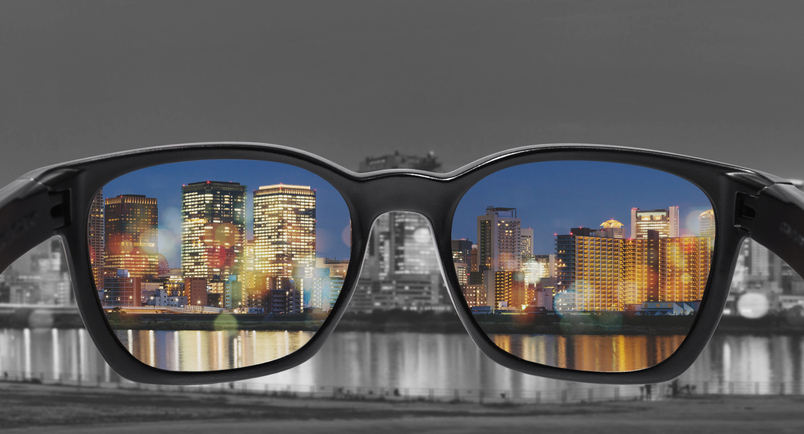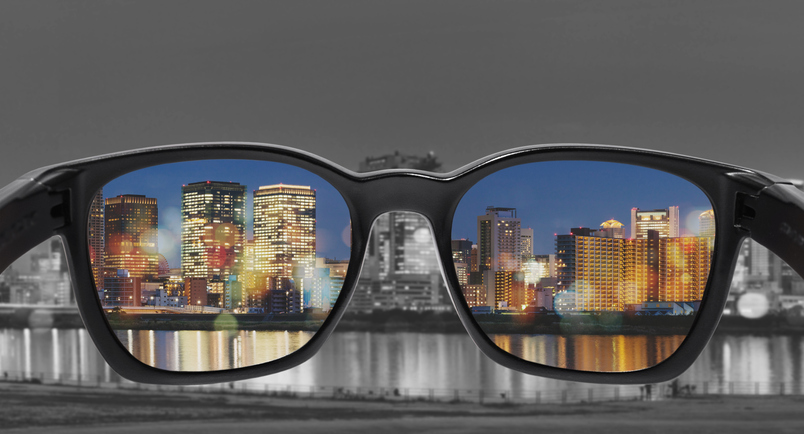In recent decades our society has become increasingly aware of discrimination and its impacts, and much is being done to promote a more inclusive society.
This is why most western cultures now have an Anti-Discrimination commission or department, working proactively to increase accessibility – and also reactively, to provide an avenue of recourse for those who are suffering purely because of their looks, race, gender, sexuality or disability.
While this is all well and good, what about people with colour blindness?

Colour blindness seems to be one of the “invisible” disabilities, like mental illness.
While it is common to see braille signs and paths in public areas for the legally blind, these don’t help the population affected by colour blindness. What important messages are the colour blind missing out on, or finding it difficult to comprehend, because of their condition?
What is Colour Blindness?
Let’s start by looking at the condition most of us know as colour blindness. Contrary to popular opinion, people with colour blindness usually still see in colour – just in a limited way.
There are different types of colour blindness. Most common is red-green colour blindness, where the individual will have trouble discriminating between these colours. The other types affect combinations such as:
- red/brown;
- purple/blue;
- pink/grey;
- and green/yellow.
While many mistakenly believe that the colour blind see the world in shades of black, white or grey, this is in fact the rarest form of colour blindness (Achromatopsia).
So in most cases, it’s better called a “colour vision deficiency”.
Colour blindness is usually a congenital condition; that is, the individual is born with it as a result of genes passed on by their parents. It affects more men than women, with 8% of the male population affected, and around .5% of females.
Cases which develop later in life may be as a result of injury to the eye, optic nerve or brain, or due to chronic conditions such as diabetes, multiple sclerosis, glaucoma, and macular degeneration.
There is no cure for colour blindness, however in the last ten years there have been huge advances made into supporting those with the condition:
- There are now various apps which help to solve common problems for the colour blind.
- Colour blind glasses, available from an optometrist, help individuals with colour blindness to distinguish between certain hues which would otherwise appear the same to them. Out of the various brands available, iRo lenses are said to be the only ones which help wearers to pass the Ishihara test for colour blindness.
- There is also some promising research in the area of gene technology. Scientists proposed that injecting genetic material into the eye could repair the faulty receptors responsible for colour blindness; and while animal trials have been successful, there is no news yet on human trials. There are still some limitations as it may only be suitable for treating congenital colour blindness.
Wikipedia seems to make light of colour blindness, basically stating that it is a minor inconvenience and colour blind people “usually adapt”. However the reality is it can affect just about every area of a person’s life – from the type of career they can pursue, to video games, driving, grocery shopping, choosing outfits, non verbal communication – and the list goes on!

While Colour Vision Deficiency certainly places sufferers at a disadvantage, it is not usually considered to be a disability under discrimination laws.
So accessible signage (from a colour blind perspective) is often ignored.
In an ideal world, it would be mandatory to ensure that colour is NOT the only way to convey information. By using symbols, patterns and textures, visual communication becomes more inclusive. While colour is definitely eye-catching and effective for most of the population, remember – this isn’t the case for everyone!
While it may not (yet) be included as a type of discrimination, there is one obvious similarity – it generally occurs unthinkingly or out of ignorance. So, let’s make people aware of what it’s like to be colour blind, and encourage more inclusive visual communication!


